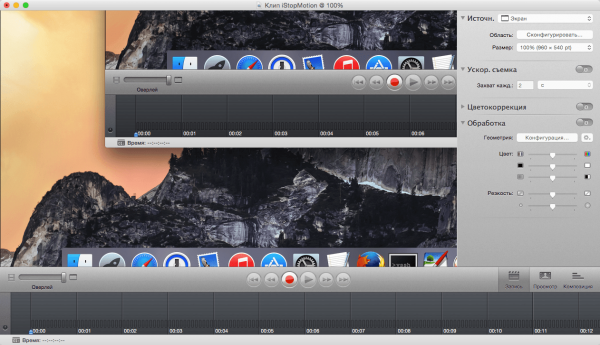
- #ISTOPMOTION MAC RESOLUTION NOT MATCHING FOR MAC#
- #ISTOPMOTION MAC RESOLUTION NOT MATCHING 1080P#
- #ISTOPMOTION MAC RESOLUTION NOT MATCHING TV#
- #ISTOPMOTION MAC RESOLUTION NOT MATCHING WINDOWS#
#ISTOPMOTION MAC RESOLUTION NOT MATCHING WINDOWS#
These settings remain available for configuration using theĬWA for Windows Group Policy Object administrative template (administrators only). DPI matching is recommended in all cases, especially when high-resolution monitors (above 1920x1080) are in use.Īs part of this change, the ‘High DPI’ options that were previously accessible under ‘Advance Preferences’ in CWA are no longer available. This means CWA will attempt to match display resolution and DPI scale settings of the local Windows client to the Citrix session automatically.

Note: Starting with Citrix Workspace App (CWA) for Windows 2206, DPI matching is enabled by default.
#ISTOPMOTION MAC RESOLUTION NOT MATCHING 1080P#
When I plug into a 1080p TV, all is well and the Mac automatically switches resolutions to match the TV.
#ISTOPMOTION MAC RESOLUTION NOT MATCHING TV#
There has already been an enhancement request created for these features to be added in future releases. In display settings, I accidentally selected a resolution lower than 720p, and my TV says 'format not supported.' Normally, I thought the computer would revert back to the original settings unless you press enter. aspect ratio does not match the aspect ratio of the iStopMotion movie.
#ISTOPMOTION MAC RESOLUTION NOT MATCHING FOR MAC#
Note: High DPI support is not available for MAC or Chromebook OS CWA versions. iStopMotion will automatically resize and crop the image to fill the preview area. Once you restart the workspace, users should see the same resolution in the VDA as seen on the endpoint device.In the Display Settings dialog box, select High DPI Mode, then click Save. In the WorkSpaces client application, go to Settings, Display Settings. Open your Amazon WorkSpaces 3.0+ client application and log in to your WorkSpace. Here you will see you can change the settings to "Yes", "No" (which uses native resolution) or you can decide to "let the operating system" decide. To enable high DPI mode for Windows, macOS, or Linux.To do this, right-click on the Citrix Workspace App icon in the system tray.

To get this to work on Windows endpoint devices, users would need to set the DPI settings in Citrix Workspace to "no". In later versions from 7.16 onwards, DPI support was added to the VDA with the intention to reproduce the same DPI experience on the endpoint on the VDA. A 5k monitor scales well to 2560x1440, as that is true pixel doubled, and that's what. 4k resolution does not scale well to 2560x1440.

10:00:14.938 screenresolution Display 0: 10:00:14.939 screenresolution Display 1: a bonus, it also gives you the color depth in bits and, if available, the refresh rate in Hz.In 7.15 there was no DPI support, so DPI on the VDA was not tracked or modified by the VDA. IMO, running 4k on a 27' monitor just doesn't work well. 10:00:14.935 screenresolution starting screenresolution argv=screenresolution get The command line isn't much like anything else on this earth, but it works: $ screenresolution get These are the bounds of the desktop relative to the upper left corner of the main monitor: x = -1440 0 2560Īs you can see, this by itself doesn't actually give you the scaled vertical resolution of the main monitor (although you can figure it out from the physical aspect ratio).Īnother option is the GPL'ed utility screenresolution (which is available through Homebrew if you don't want to build it yourself). When I run the command above, it reports: -1440, 0, 2560, 2560 For instance, I have a Retina iMac 21" with physical resolution 4096x2304 and scaled resolution 2560x1440 I also have an external portrait monitor running at 1440x2560: ┌─────────┐┌─────────────┐ Note that if you're running a multi-monitor setup, this may require some interpretation.

If you need that, you can sort of get it with osascript: $ osascript -e 'tell application "Finder" to get bounds of window of desktop' System_profiler SPDisplaysDataType will give you the physical resolution of a Retina display, but it won't give you the effective (scaled) resolution.


 0 kommentar(er)
0 kommentar(er)
